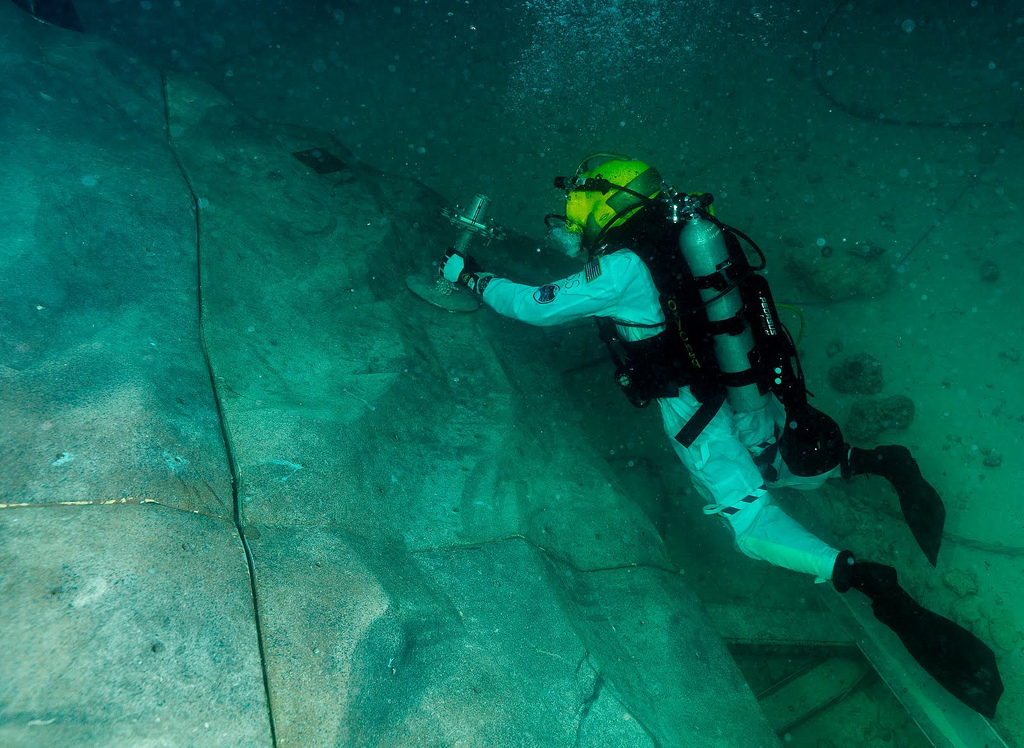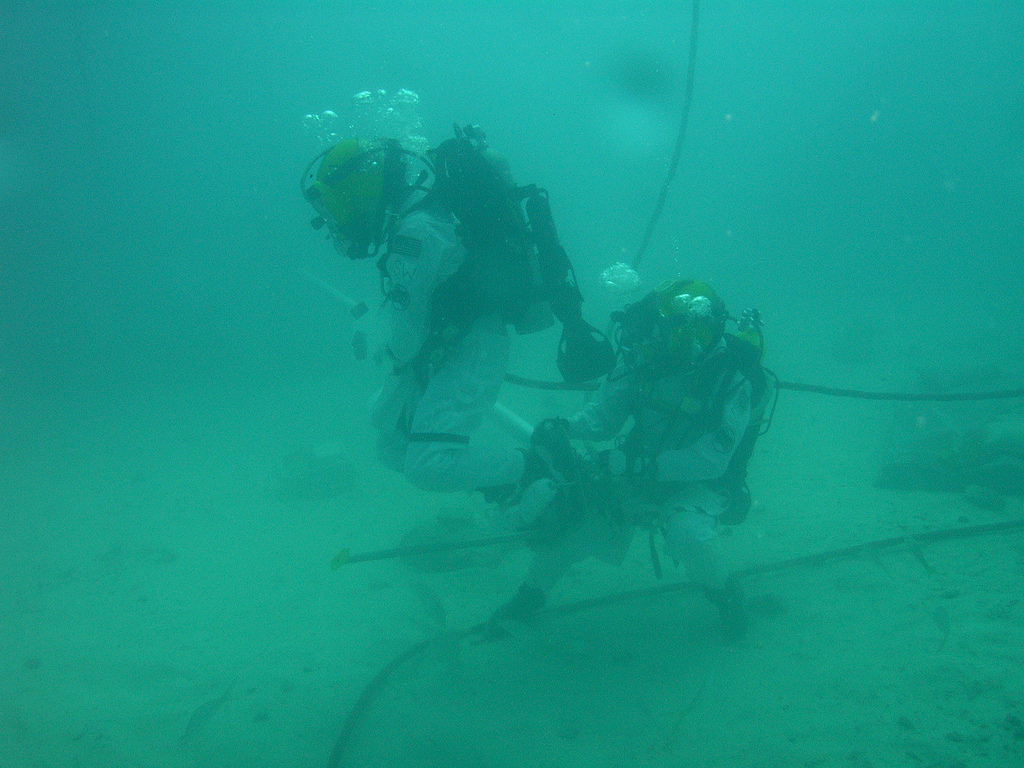NASA's Underwater 'Asteroid' Mission Floats Past Midway Point

A team of astronauts and scientists who are living and working on the ocean floor as part of a simulated trip to an asteroid are nearing the halfway mark of their 13-day mission.
Six "aquanauts" are experimenting with different ways to anchor to an asteroid, explore its surface, and perform science on the space rock. The mission is the 15th expedition of NASA's Extreme Environment Mission Operations, or NEEMO, and the first to simulate aspects of a manned mission to an asteroid.
The crewmembers splashed down on Oct. 20 and are now living at the Aquarius Underwater Laboratory, which sits 60 feet (18 meters) below the Atlantic Ocean, about 3 1/2 miles off the shore of Key Largo, Fla. NASA uses the facility, which is owned by the National Oceanic and Atmospheric Administration (NOAA), to approximate the weightless conditions in space and on an asteroid.
"We have just brought in our first two aquanauts from their excursion testing new ways to do science on an asteroid," NEEMO 15 commander Shannon Walker said in a video update on the crew's second day underwater. "They spent about three hours this morning outside in the water looking at different techniques to try and collect rock samples." [Gallery: Astronauts Explore Undersea 'Asteroid']

Walker's team is made up of Canadian astronaut David Saint-Jacques, Japanese astronaut Takuya Onishi, planetary scientist Steve Squyres and two veteran divers, James Talacek and Nate Bender of the University of North Carolina, Wilmington.
Walker completed a long duration mission aboard the International Space Station in 2010, and there are similarities between the two experiences, she told SPACE.com in an interview Monday (Oct. 24) from the Aquarius habitat.
"In a lot of ways it's very, very similar," Walker said. "We're in a small space, there's six of us here, and we have to keep our little areas neat so we don't intrude on other people. In many ways, living in Aquarius is a lot easier because we get to have visitors every day that can bring us equipment or food or whatever. Once you're in space, you don't get visitors very often."
Get the Space.com Newsletter
Breaking space news, the latest updates on rocket launches, skywatching events and more!
NEEMO 15 will test various concepts of how to anchor to an asteroid, travel around on its surface, and perform science experiments on a mock asteroid landscape that was assembled on the ocean floor. The aquanauts will also test the effectiveness of using jetpacks to maneuver around, and will work in tandem with a DeepWorker submersible, which is a small submarine that is being used in place of a rover that is under development for a future asteroid mission.
In addition to extravehicular activities, the aquanauts will also participate in behavioral science projects that focus on how to cope with emergency scenarios or a loss or delay in communication with Mission Control.
NEEMO 15 will help NASA plan for a future manned mission to an asteroid. As part of NASA's exploration goals, the agency is aiming to send humans to an asteroid by the year 2025.
The NEEMO mission is a joint venture between NASA, the National Oceanic and Atmospheric Administration (NOAA), which owns the Aquarius laboratory, and the University of North Carolina, Wilmington, which operates the underwater facility.
You can follow SPACE.com staff writer Denise Chow on Twitter @denisechow. Follow SPACE.com for the latest in space science and exploration news on Twitter @Spacedotcom and on Facebook.
Join our Space Forums to keep talking space on the latest missions, night sky and more! And if you have a news tip, correction or comment, let us know at: community@space.com.

Denise Chow is a former Space.com staff writer who then worked as assistant managing editor at Live Science before moving to NBC News as a science reporter, where she focuses on general science and climate change. She spent two years with Space.com, writing about rocket launches and covering NASA's final three space shuttle missions, before joining the Live Science team in 2013. A Canadian transplant, Denise has a bachelor's degree from the University of Toronto, and a master's degree in journalism from New York University. At NBC News, Denise covers general science and climate change.









